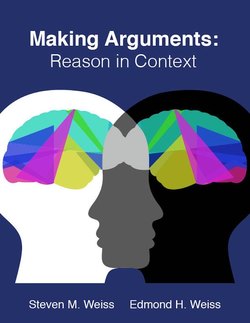Читать книгу Making Arguments: Reason in Context - Edmond H. Weiss - Страница 6
Making Arguments: Reason in Context
ОглавлениеIs there a standard for evaluating arguments broad enough to apply to both models? Is there a set of criteria that both Lee and Bailey might use?
The process of simultaneously designing a rational case and delivering it to a real audience can be appraised within this single standard: We argue with a judge in mind. How does this standard differ from the standards invoked by Lee and Bailey, those historically used in the study of argumentation?
In the traditional approach, judgment is only important insofar as it entails the persuading of a particular audience that is qualified to evaluate a claim. If jurors were scientists, like those that present the evidence in court cases, then Lee would have no frustration about their listening to his rationally constructed evidence. Similarly, Bailey’s “adaptation” of her case to the jury would involve designing it for a predictable audience, with known attitudes and limitations, and with predictable rules for evaluating evidence. In other words, her particular audience would not be much different in kind from the nearly abstract (rational) audience that Lee has in mind: both would follow predictable rules of reasoning and inference.
In contrast, our goal here is to merge whatever standards we have for success in argumentation with the notion of those who will judge the argument itself. In our approach, how one argues and whom one argues for are not separate dimensions of argument, but, rather, can be viewed as one and the same thing.
The implication is straightforward. When Lee became upset by the jury’s abandoning him over a “petty” question, he missed an essential component in argument. He shouldn’t have made any distinction between the rationality of his points and the quality of the decision makers. He should have, moreover, anticipated how his jury would have responded to a question like the one the defense asked. Ironically, it is Bailey’s viewpoint (what the audience needs) that should have been paramount in Lee’s proceeding with his case. More important, however, Lee need not have replaced his way of arguing with Bailey’s; rather he should have added Bailey’s technique of argument to his own and included it in the rationale for arguing his case. Likewise, Bailey could have taken advantage of every possible rational inclination of her audience by absorbing some of Lee’s way of arguing.
Lee and Bailey represent respective extremes, archetypes, of the application of reason-based and context-based standards for argumentation. The viewpoint of this book is that, insofar as argumentation is concerned, reason and context occupy the same argumentative space. They are neither opposite, nor even alternative ways to argue. They are fused into a single notion: Who judges your argument, and how you construct your argument, are often indistinguishable.
